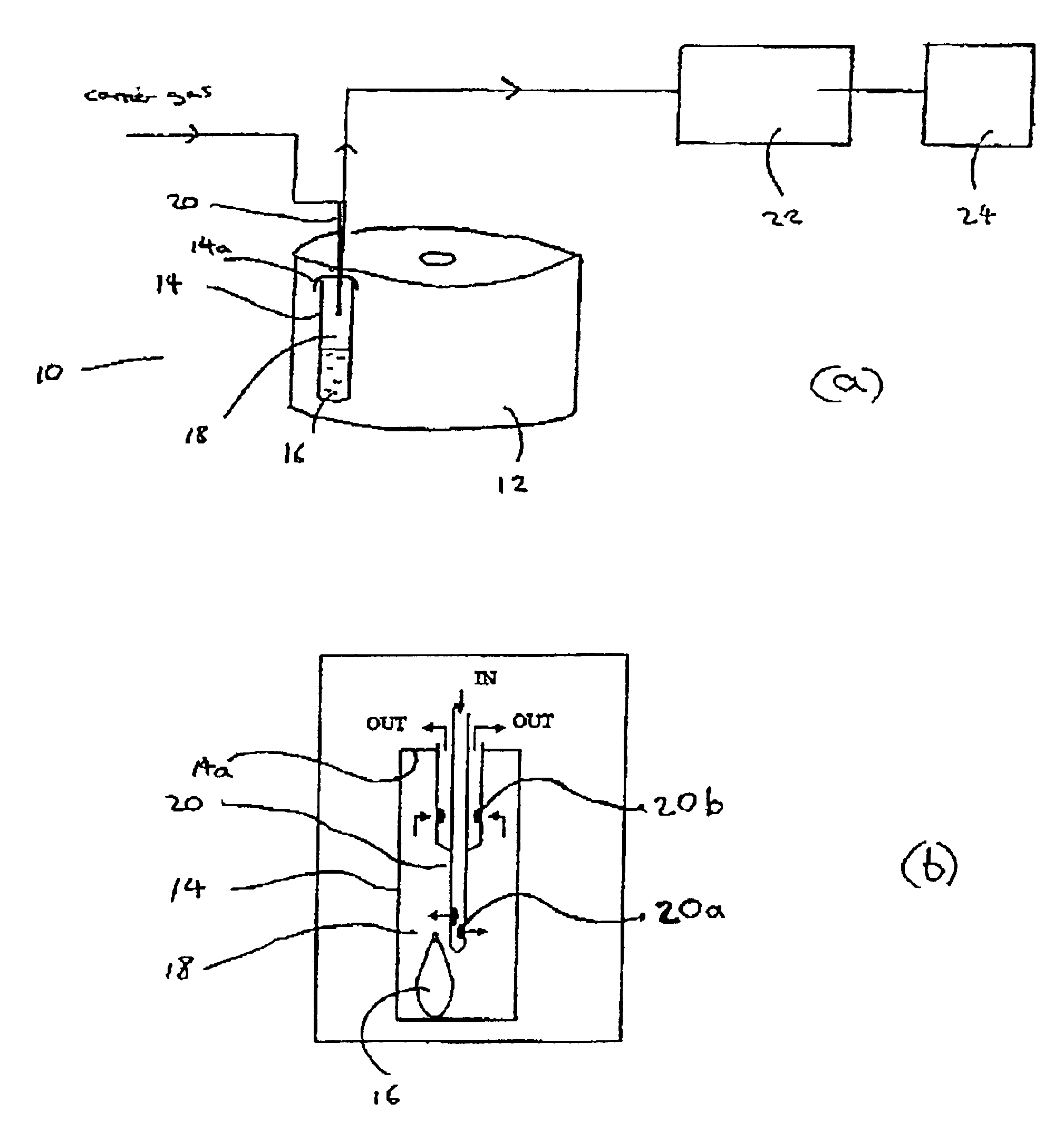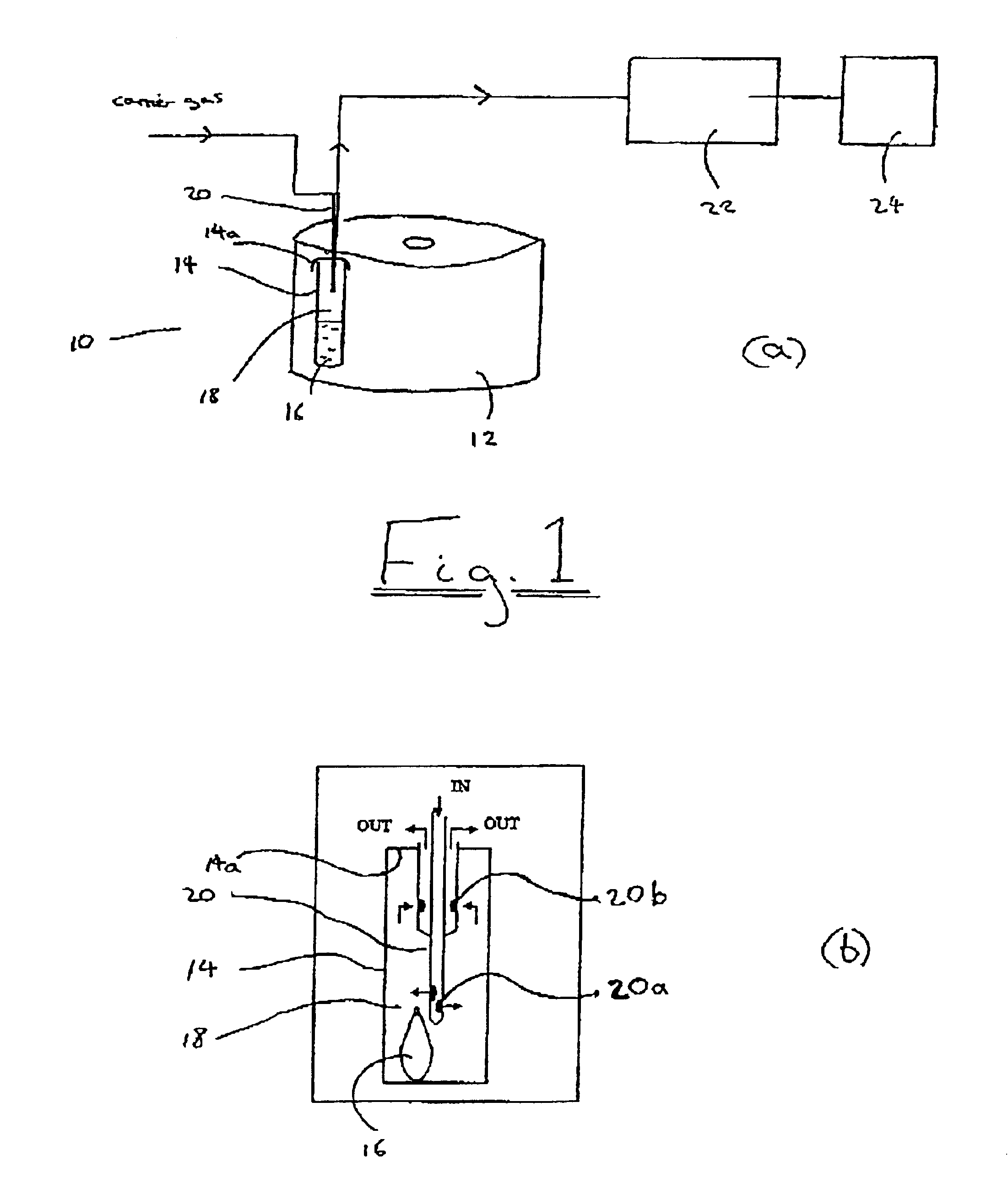Detection of bacterial vaginosis
a technology of bacterial vaginosis and detection method, which is applied in the field of detection of bacterial vaginosis using gas detector, can solve the problems of unsatisfactory, unreliable diagnosis of presence or absence of bacterial vaginosis, and wide and varied bv, so as to achieve the effect of convenient automatic detection
- Summary
- Abstract
- Description
- Claims
- Application Information
AI Technical Summary
Benefits of technology
Problems solved by technology
Method used
Image
Examples
Embodiment Construction
[0054]FIG. 1(a) schematically depicts apparatus shown generally at 10, for use with the method of the present invention. The apparatus comprises a sample carousel 12 in which a number of sample vials can be mounted and maintained at a constant temperature, for example 40° C. For simplicity, a single sample vial 14 is shown in FIG. 1(a). The vial 14 contains a sample 16 such as a swab taken from the vagina of a subject. Above the sample 16 is a gaseous headspace 18 which contains inter alia volatile species emanating from the sample 16.
[0055]The vial 14 has a septum 14a thereon which is pierced by a needle 20, the insertion of needle 20 into the vial 14 being performed automatically by the apparatus 10. The needle 20 is shown in more detail in FIG. 1(b). The needle 20 is of co-axial design, which permits a carrier gas (such as air, nitrogen or a noble gas) to be introduced to vial 14 via the inner lumen 20a of the needle 20. Gases in the headspace 18 are entrained in tile flow of car...
PUM
 Login to View More
Login to View More Abstract
Description
Claims
Application Information
 Login to View More
Login to View More - R&D
- Intellectual Property
- Life Sciences
- Materials
- Tech Scout
- Unparalleled Data Quality
- Higher Quality Content
- 60% Fewer Hallucinations
Browse by: Latest US Patents, China's latest patents, Technical Efficacy Thesaurus, Application Domain, Technology Topic, Popular Technical Reports.
© 2025 PatSnap. All rights reserved.Legal|Privacy policy|Modern Slavery Act Transparency Statement|Sitemap|About US| Contact US: help@patsnap.com



